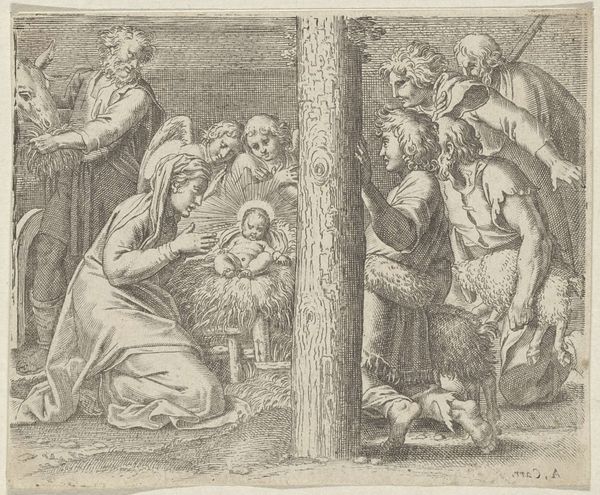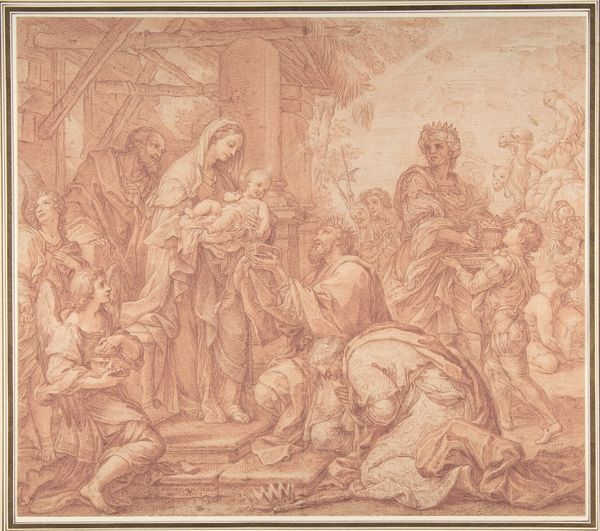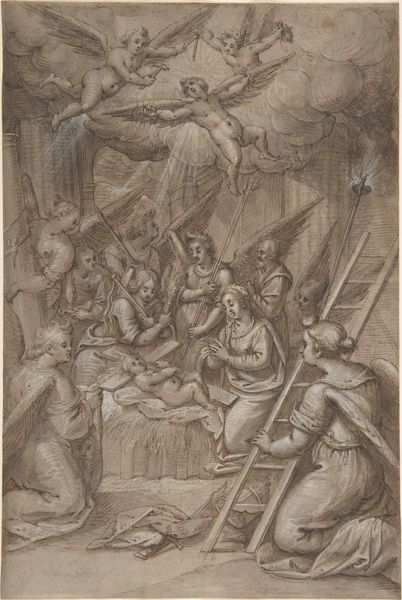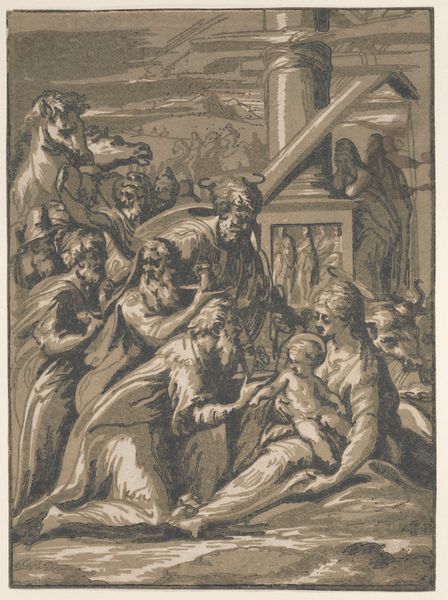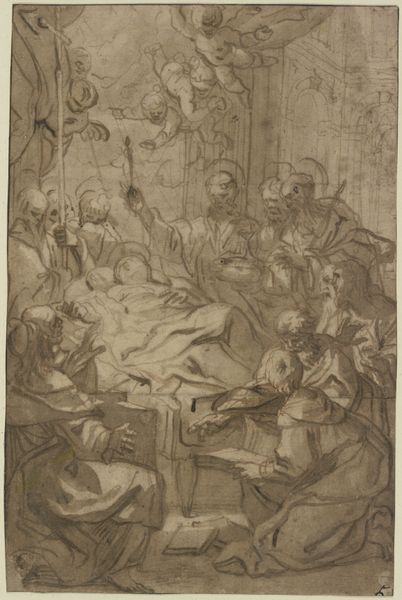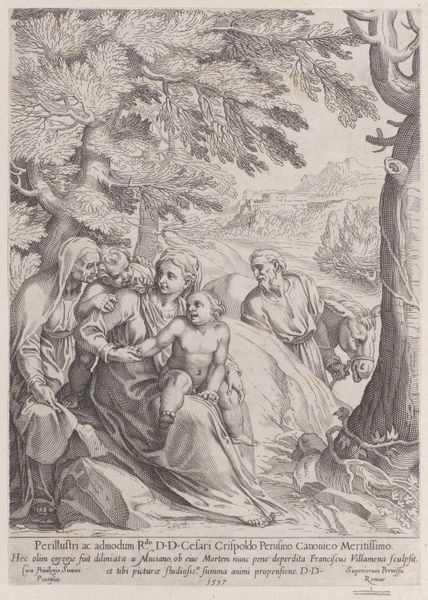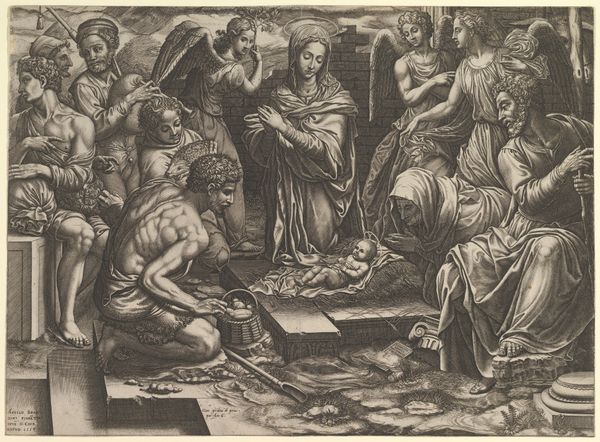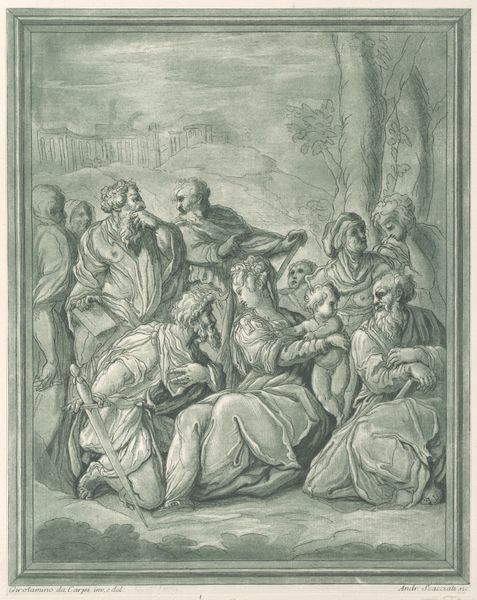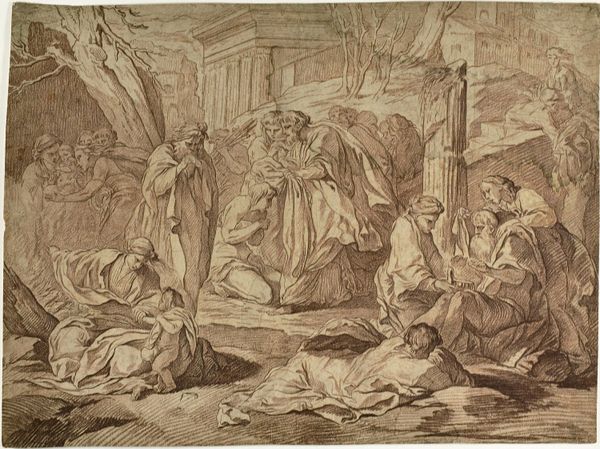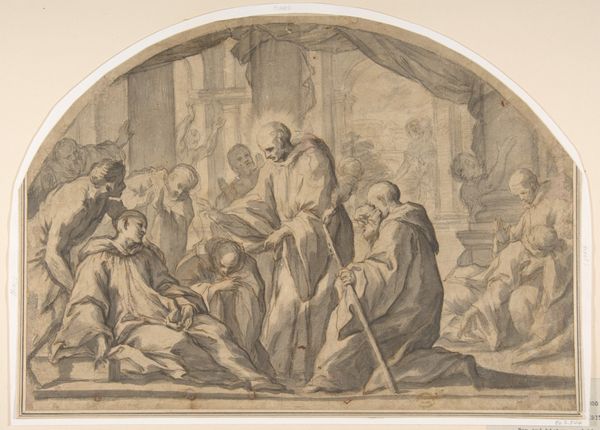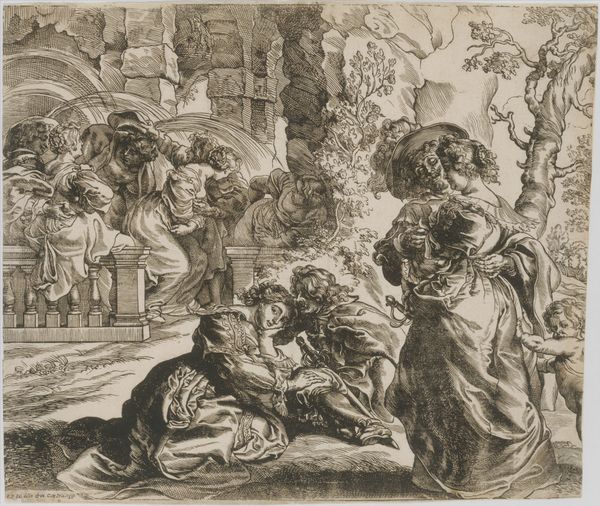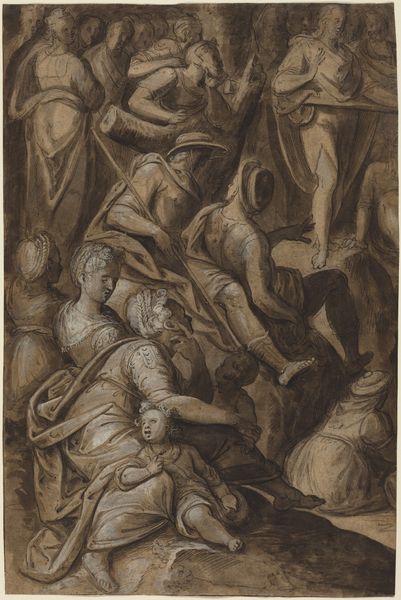
drawing, print, gouache, paper, charcoal
#
drawing
#
narrative-art
#
baroque
# print
#
gouache
#
charcoal drawing
#
figuration
#
paper
#
genre-painting
#
charcoal
Dimensions: 195 × 228 mm
Copyright: Public Domain
Editor: Here we have Gerrit van Battem's "The Adoration of the Shepherds," made around the late 1650s. It’s a drawing composed of charcoal, gouache, and what looks like ink on paper. I find the rendering very compelling; the grey monochrome palette emphasizes the materiality. What strikes you most about this work? Curator: For me, the emphasis on process is central. Look closely at the texture achieved by charcoal and gouache. Van Battem uses readily available, even humble, materials to depict a scene of profound religious significance. Considering the 17th century Dutch art market, this suggests a specific patron, someone perhaps less concerned with lavish displays of wealth and more interested in accessible spirituality. Notice also the paper itself, its weave and quality, its availability. These aren't incidental. Editor: That's a very interesting approach. I tend to focus more on the narrative—the shepherds' reactions, the composition that guides the eye toward the Christ Child. I hadn’t thought so much about the "how" and "why" of the materials themselves. Curator: But isn’t the narrative *defined* by those choices? Van Battem chooses print and drawing as mediums for accessibility, breaking down traditional barriers to accessing spiritual ideas. This piece directly relates to art and societal context of that time. Consider, where was this drawing meant to be viewed? Editor: I suppose it invites us to rethink the social hierarchies embedded within art itself – to ask questions about accessibility. This isn't some grand oil painting displayed in a palace. It connects materiality with access to both religion and art. Curator: Precisely! So what have you discovered now, by considering these details of material and context? Editor: Thinking about the materials, especially considering the historical context, really changes how I interpret the piece. I see now how it blurs the boundaries between high art and perhaps a more personal, accessible form of religious expression. Thanks!
Comments
No comments
Be the first to comment and join the conversation on the ultimate creative platform.

